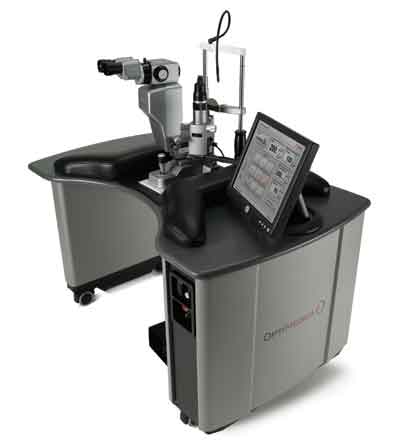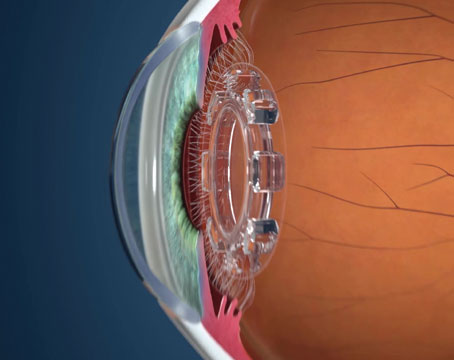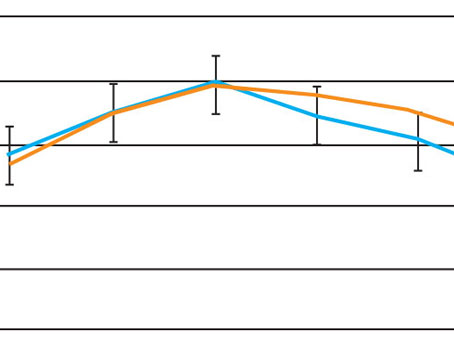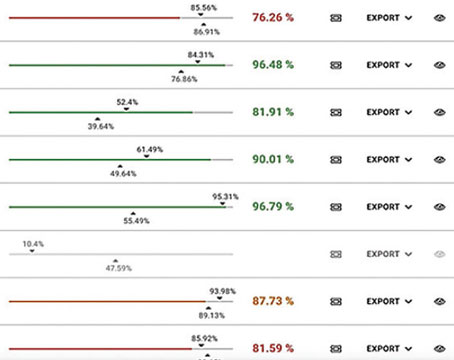PASCAL is short for Pattern Scan Laser. It's a frequency-doubled Nd:YAG solid-state device that fires pulses in the green, 532 nm wavelength.
"Where other lasers deliver one spot at a time, through the use of new technology, PASCAL lets the surgeon deliver a wide variety of patterns of laser spots simultaneously," says George Williams, MD, a retinal specialist from Royal Oak, Mich. "Instead of always getting one spot when you push down on the foot pedal, you can get up to 25 spots with one press. You can then complete a case more efficiently."
The laser offers various combinations of spots and shapes for laying down. It can perform such treatments as 2 x 2, 3 x 3, 4 x 4 and 5 x 5 grids of spots, arcuate patterns that look like sections of a circle and macular grid treatments totaling 56 spots that encircle the fovea. It also has a single-spot mode if a surgeon needs to target aneurysms or perform focal macular treatments.
The PASCAL laser allows physicians to place multiple spots with one press of the foot pedal.

"It's very useful for diabetic retinopathy treatments, which are probably its biggest use," says Dr. Williams, "because it allows the delivery of grid and panretinal treatments. It's also good for retinal tears and branch and retinal vein occlusions."
In addition to specifying the number of spots and the shape in which you put them down, PASCAL also allows adjustments to how they're placed. "You can make them closer or farther apart," explains Dr. Williams. "They can be as close as 0.25 disc diameters or as far apart as two disc diameters."
Along with the efficiency and time savings involved with laying down groups of spots at one time, the company also thinks this makes for a more comfortable, easily tolerated treatment experience for the patient, who doesn't have to sit still while 1,000 spots are being made individually.
"If you're in 25-shot mode, and you push the pedal down 40 times, you get 1,000 treatments," says Dr. Williams. "The total treatments are of short duration, 10 or 12 minutes, so the patients have minimal, if any, discomfort. Time wise, it probably takes a quarter of the time compared to putting the spots down individually."
Though Dr. Williams appreciates the speed of the PASCAL's treatments, he looks forward to a time when the system has a laser indirect ophthalmoscope delivery option. "I think that's important," he says. "Having such a delivery system would allow you to treat more peripheral pathology." The company says such a delivery system should be available this month.
For more information on the PASCAL, visit optimedica.com.






